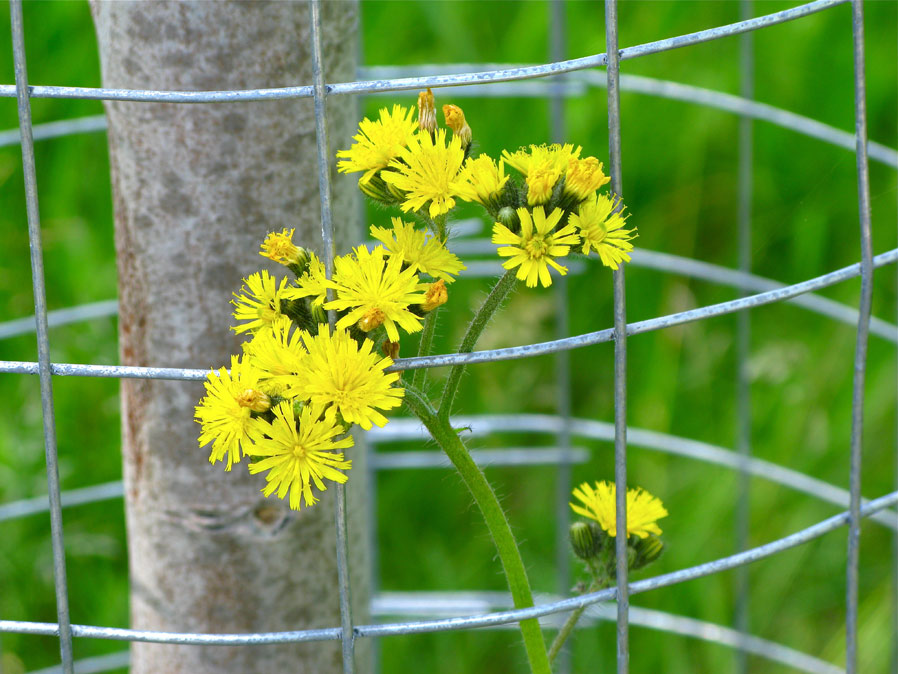Yellow hawkweed (Hieracium caespitosum) inside wire mesh protecting a sapling in High Park. © BCP 2010
Sometimes on my walks I get the feeling that there is scarcely a tree in Toronto that is safe from the ravages of our hardworking national symbol, the beaver.
Certainly the trees in my neck of the urban woods have been decimated by our local family of Castor canadensis. Several times I have had to write to The Fixer — who otherwise goes by the name Jack Lakey — at the Toronto Star. The Fixer has an excellent track record of getting action on the niggling problems that drag down city life — everything from dangerously uneven sidewalks to lights out on public streets to, well, you name it. He’s fixed it. Or gotten it fixed.
So when the beavers were having a go seeing if they could completely deforest my little pocket-sized oasis, Ashbridge’s Bay, I contacted him. And damn if he didn’t get the upper hand, er, paw, on our local beavers. Got miles more chicken wire put around our trees at risk. (Beavers are especially fond of poplars, I have found out, and will climb over crushed glass, it seems to me, to find a nice, mature specimen. One that Ma Nature has put 35 or 40 years into growing just so.)
The chicken wire does seem to work, though, when it’s in place before the beavers’ appetite really revs up.
Which brings me to High Park. I noticed on my recent ramble there that the groundskeepers of Grenadier Pond have been proactive, beating the beavs to the leaves, as it were. Yup, I found young trees on the south shore of the pond perfectly protected from the yellow-toothed scourge. (Don’t get me wrong. Some of my best friends are beavers. I just think they should know their place.)
As I walked by, the sunshiny blooms of a bushy yellow hawkweed (Hieracium caespitosum) growing inside one of these wire mesh anti-beaver cages caught my eye. Like its better-known cousin, orange hawkweed (Hieracium aurantiacum), it is a member of the aster family. Neither species is native to Ontario; both were introduced from Europe. Although farmers consider them weeds, as they spread quickly by leafy runners, they are a lovely sight to see in a field. I haven’t heard that they are considered a troubling invasive plant, like the equally pretty but unwanted purple loosestrife.
High Park is a spectacular place I don’t know very well. I plan to head back there soon to see more of its resident flora and fauna. In the meantime, if you want to know more about this huge urban resource, check out the very useful High Park Nature website. It’s maintained on a volunteer basis by writer/photographer Karen Yukich, with excellent photos taken by Tony Pus and Karen’s husband, Bob Yukich.
© BCP 2010




no comments